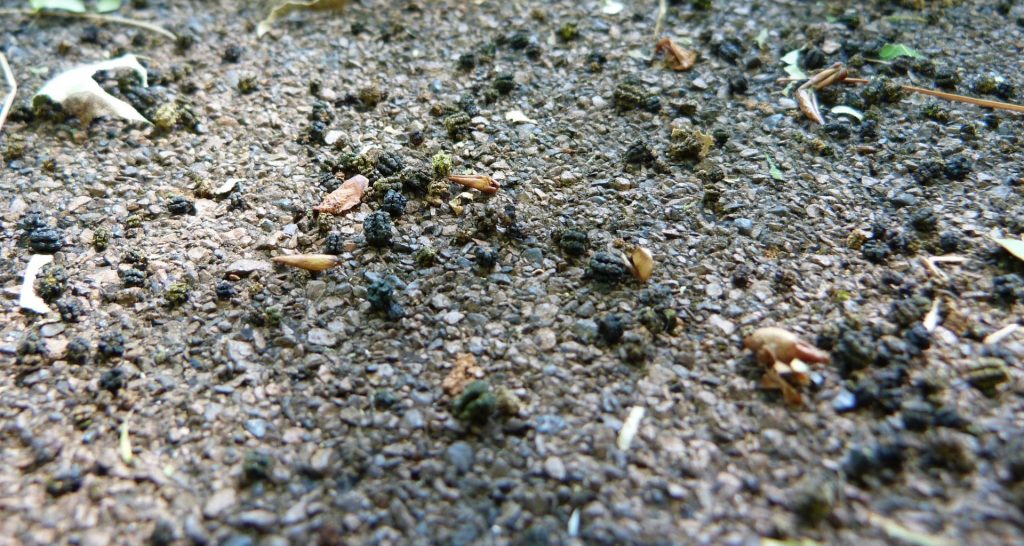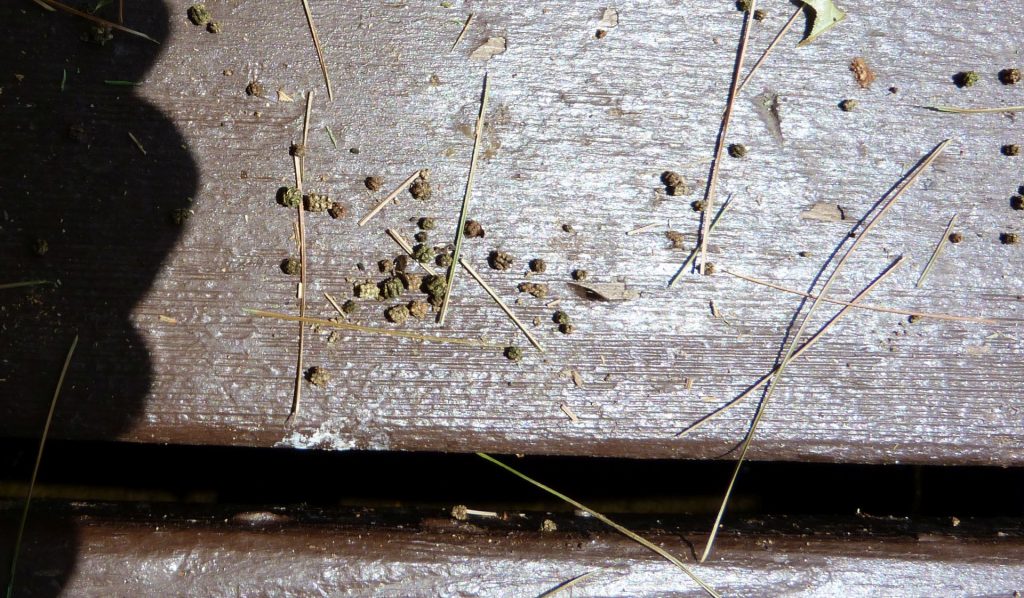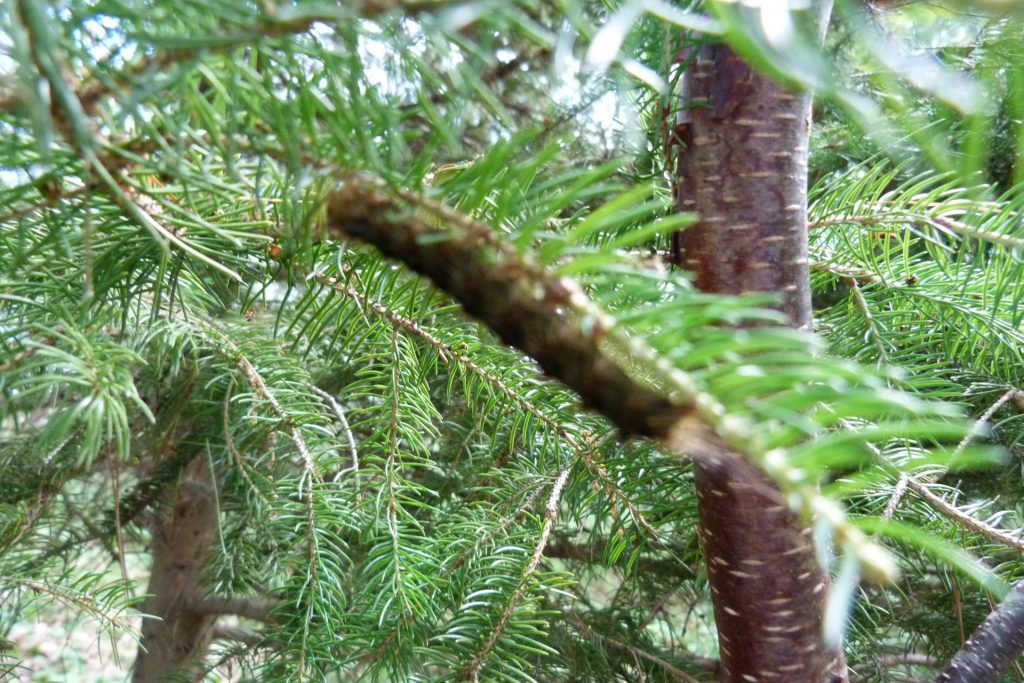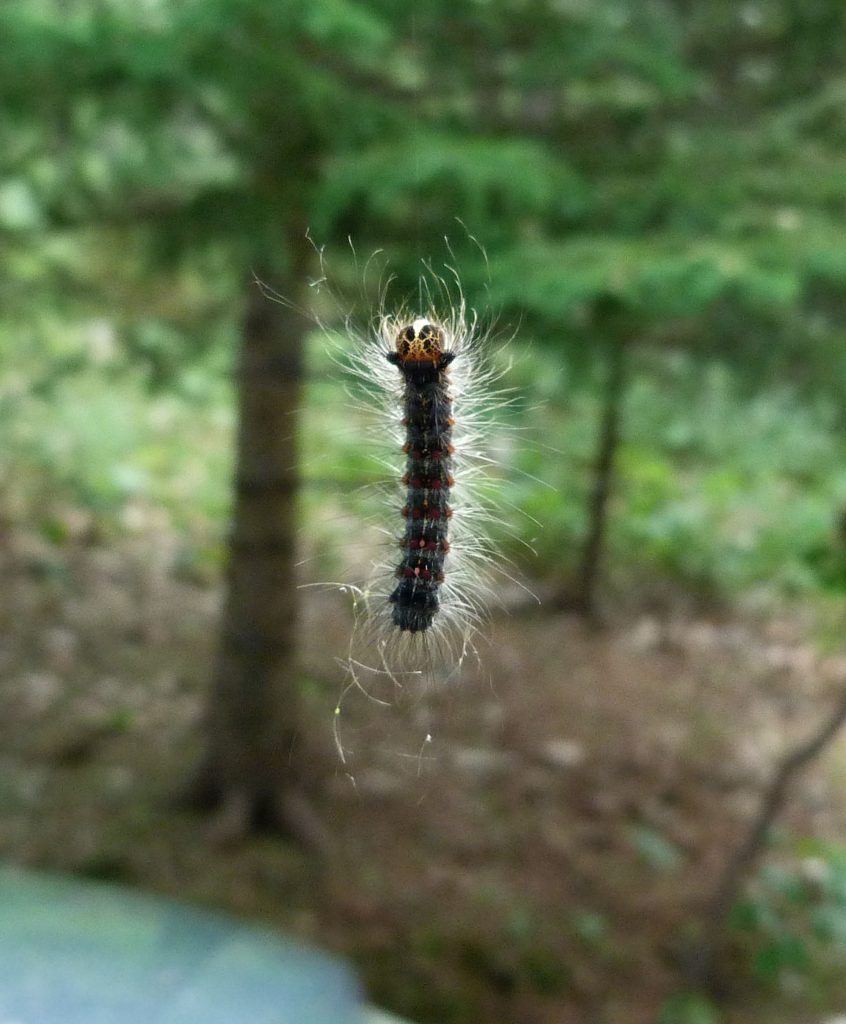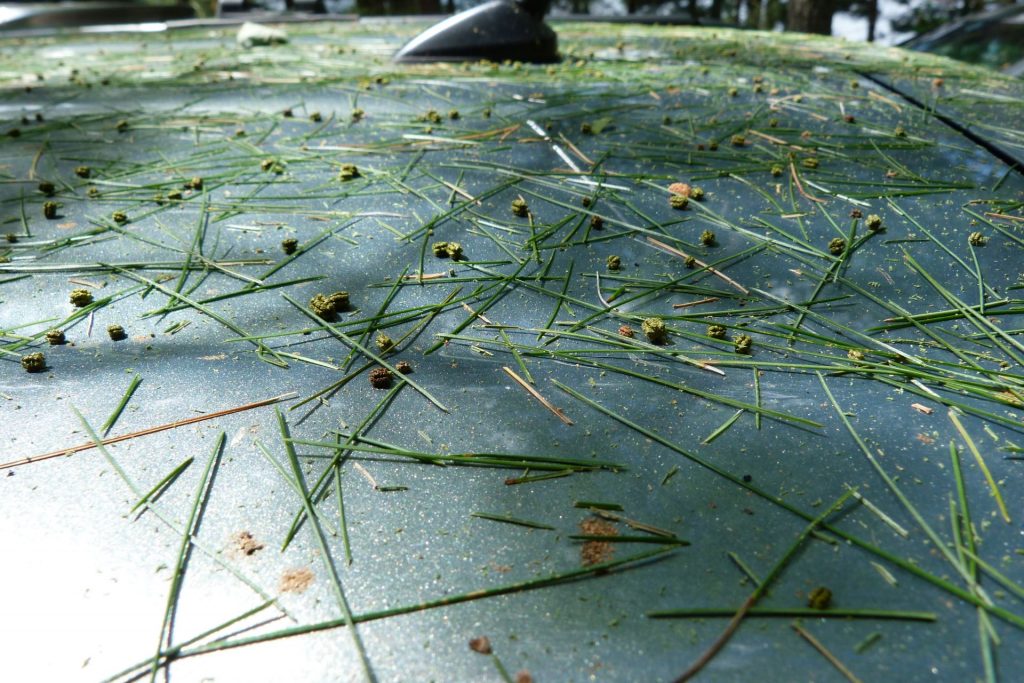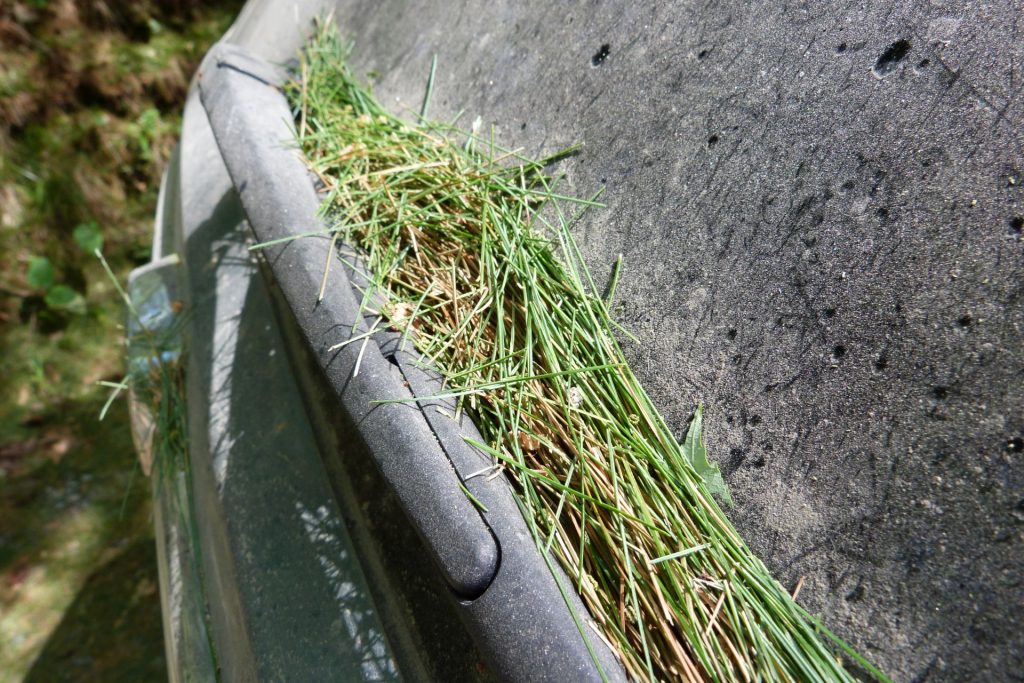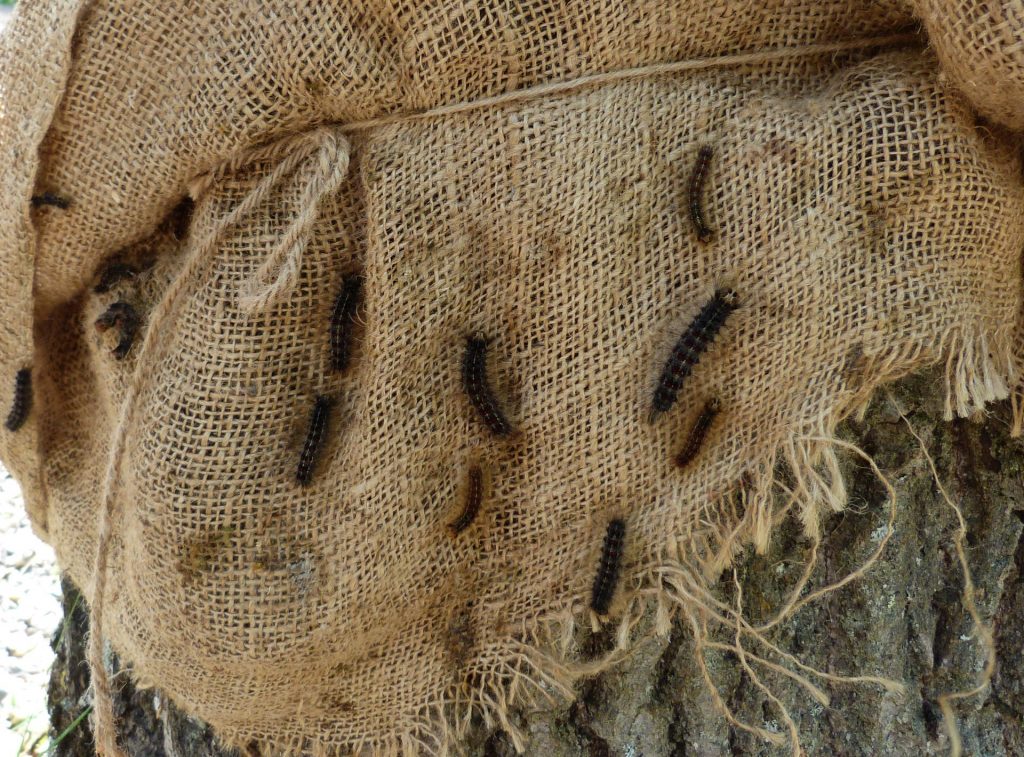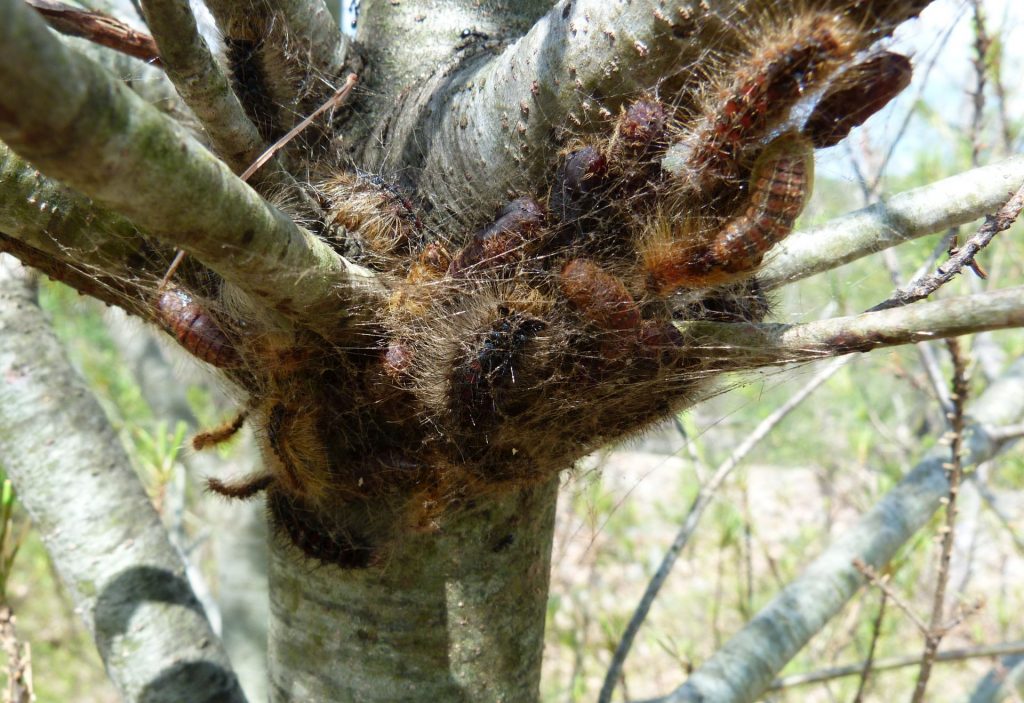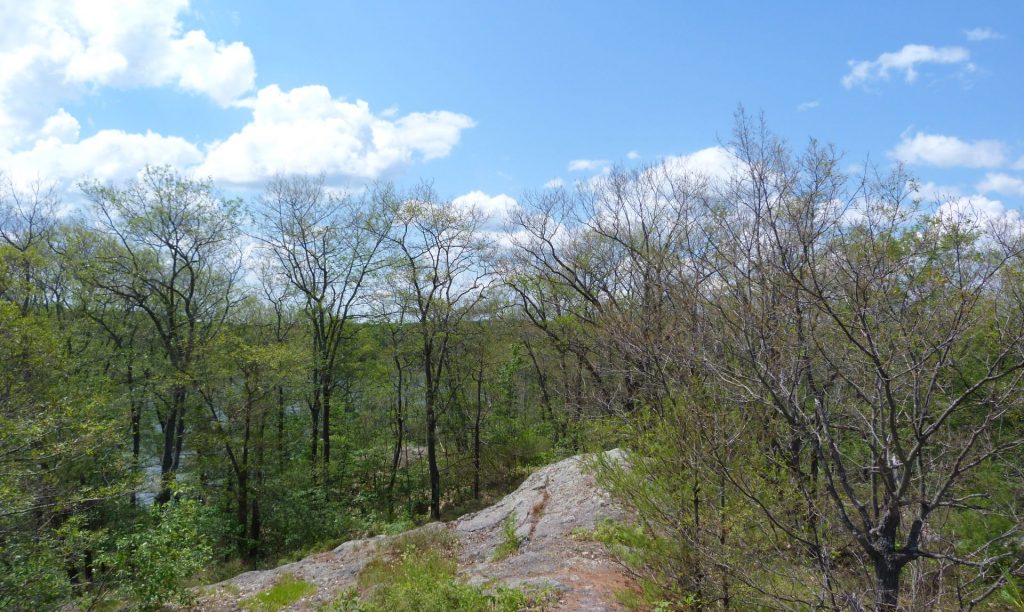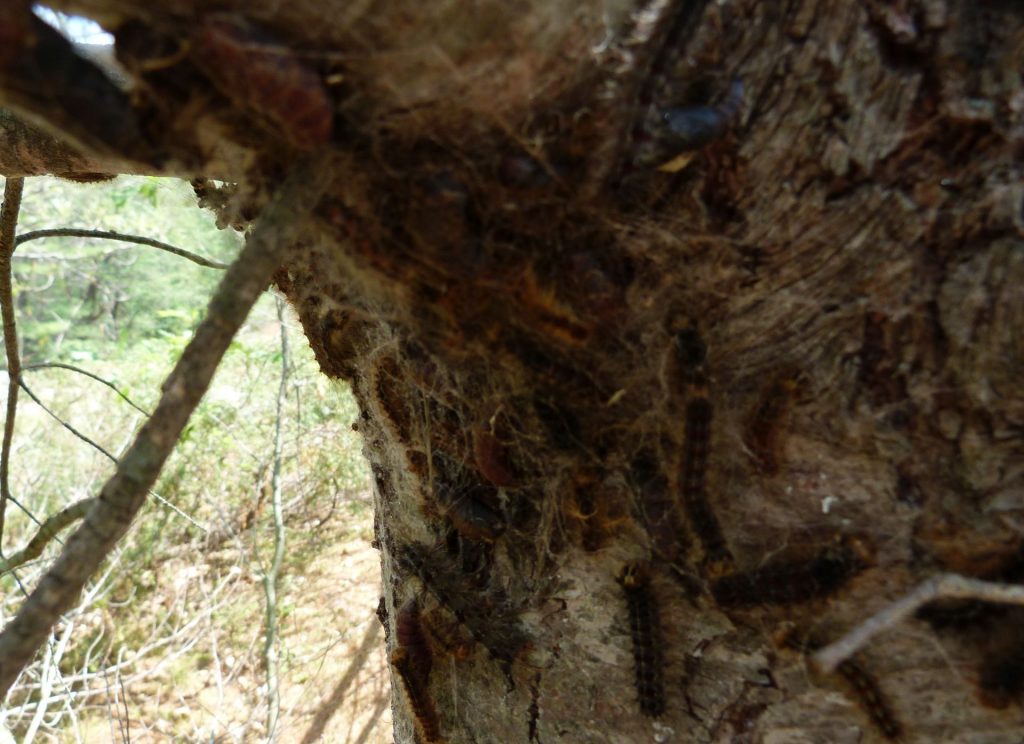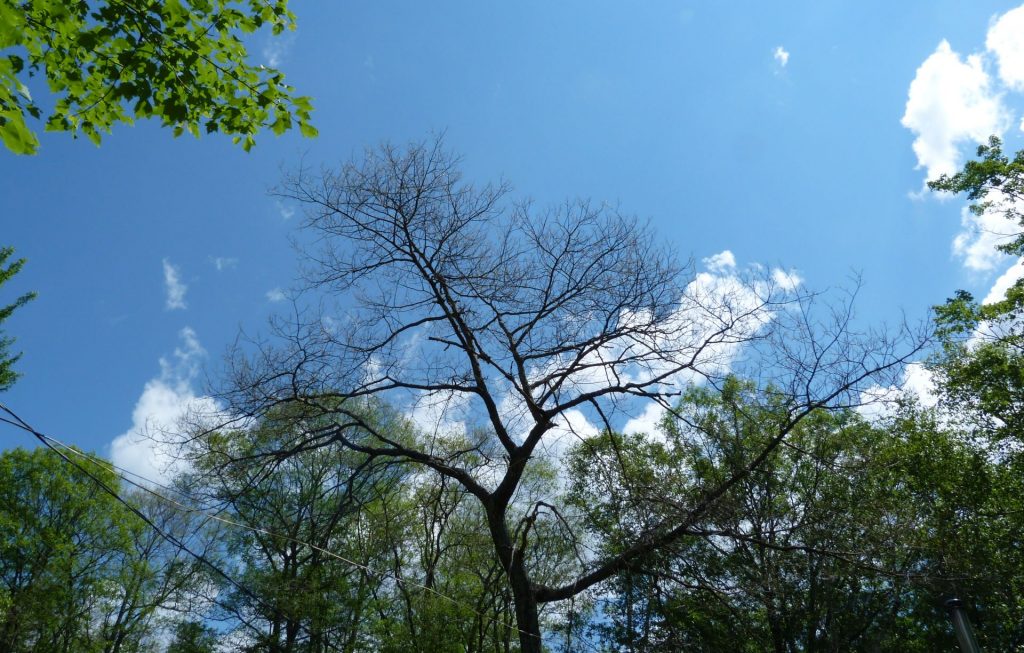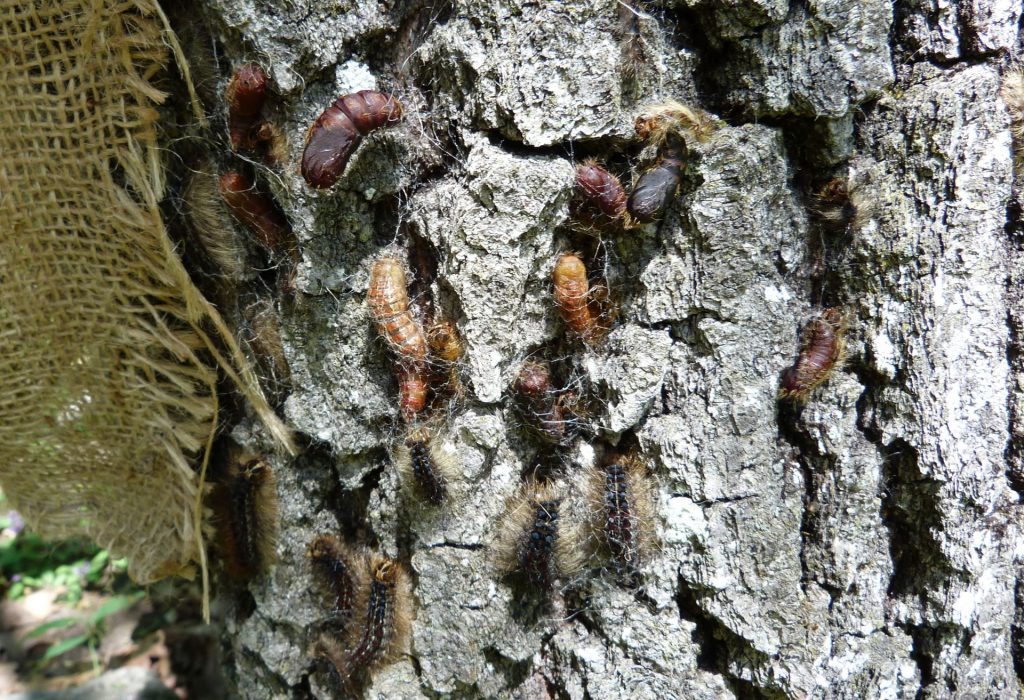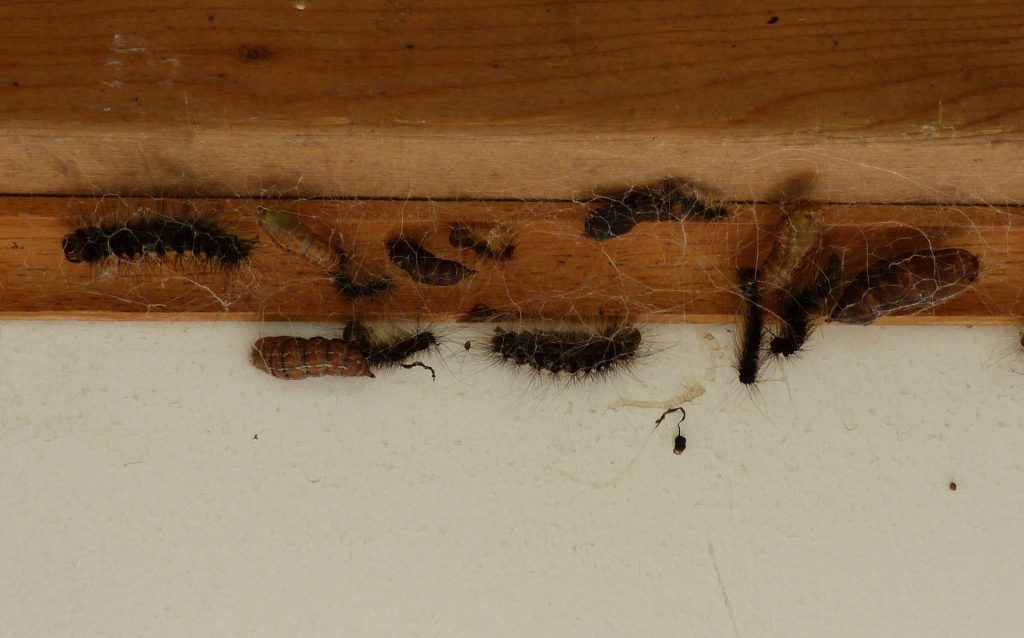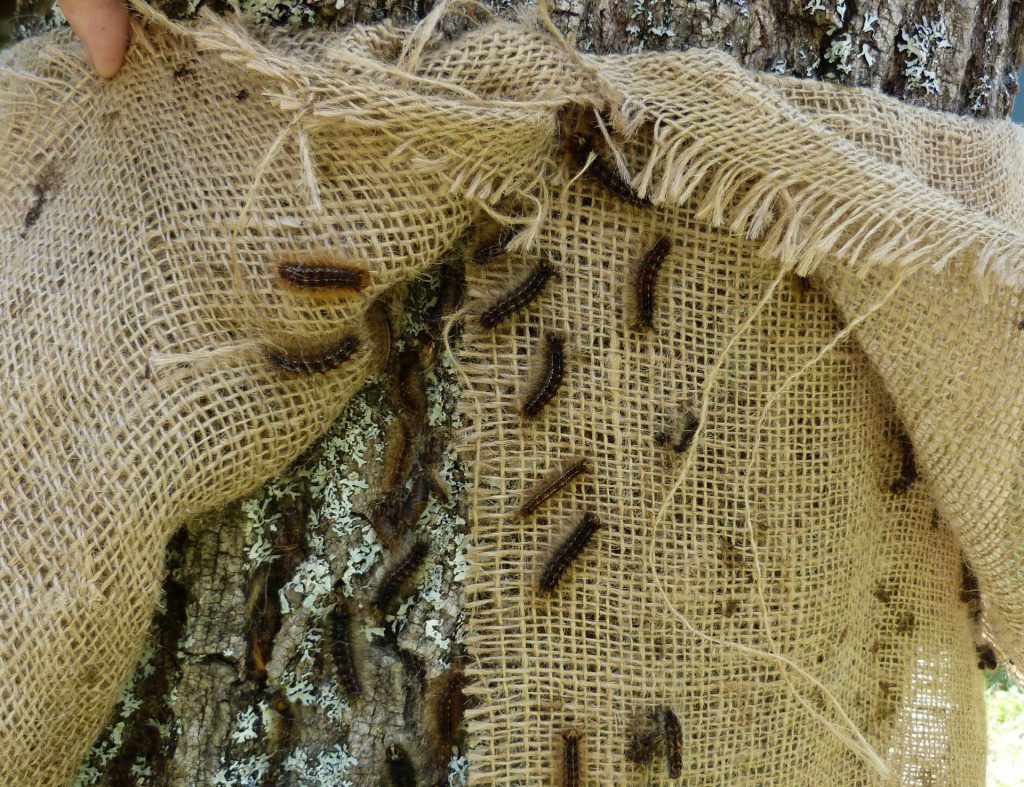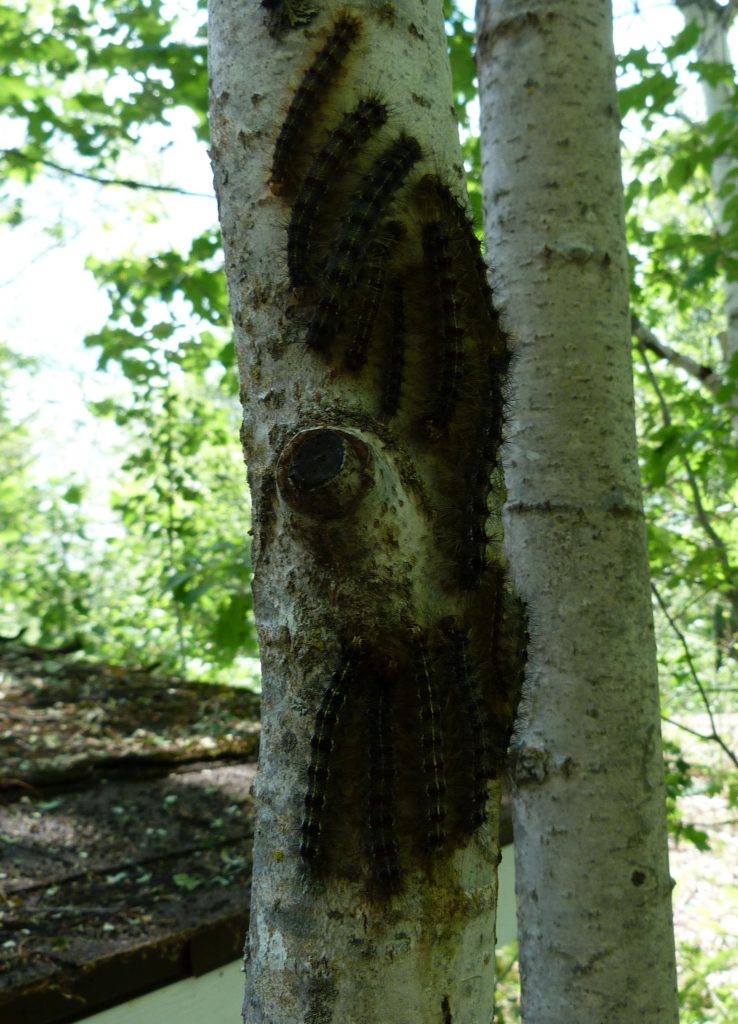Your Loon Call Lake Executive thought you would be interested in a communication between cottagers Heather Thornton and Tom Parsons; and Mike Brown, Park Biologist – Kawartha Highlands Signature Site Park. You may be seeing Gypsy Moths near your cottage and wonder what you can or should do about them. Mike will be visiting the Heather and Tom. We will update this posting with any outcomes of that meeting.
Heather Thornton and Tom Parsons (329 Fire Route 57) reported the following:
We would like to report a Gypsy moth infestation in our surrounding
cottage area on the northwest side of Looncall Lake in the Apsley
area. This is also within the Kawartha Highlands Provincial park area.
We noticed a significant increase in moths and then egg masses on our trees last summer. We attempted to collect and burn as many egg masses as possible from the Fall to Spring (thousands of them). While we think we did reduce the number in our immediate cottage area, we are seeing devastation of oaks, white pine and many other species(including our treasured blueberry bushes) in the surrounding area. We are literally taking hundreds of Caterpillars off of each limb of trees in order to stop total defoliation but this seems to be in vain. We have also wrapped many of our trees with burlap as another method which has also helped a bit.
We have read about pheromone traps and flakes but not sure about the efficacy of this method and unable to find a source. As you may be aware, this area area was hit by a previous gypsy moth infestation approximately 22 years ago resulting in the death of thousands of oak trees. We understand that the immediate Looncall lake area was sprayed, saving trees close to the lake. We know that spraying is controversial but wanted to provide some background. Any further information or contacts would be greatly appreciated.
Today (June 22nd) Heather and Tom added:
Unfortunately the caterpillar situation is getting worse by the day and we are seeing total defoliation of some oaks and significant infestation of white pines. Last night the forest was alive with caterpillar chewing noises. It is very unsettling to ‘hear’ the trees being eaten. Luckily the fireflies were also around to cheer us up :).
We had a dock visit from our friend, Terry Rees, who also happens to be the president of FOCA, on the weekend. He reported the same situation with a Gypsy moth infestation on Kasshabog lake where his family cottage is, on the other side of Apsley. He has sourced some pheremone traps to try but unfortunately they are back ordered right now. We are on a waiting list. Hopefully we are reaching the peak and we will have a very cold winter to kill them off.
Mike Brown | Park Biologist – Kawartha Highlands Signature Site Park responded:
… our counterparts with MNRF’s Forest Health Monitoring Program have indicated that reports of large-scale Gypsy moth larvae infestations are starting to filter in now. Gypsy moth were introduced to Ontario in the early 1980’s, and have cyclic populations that fluctuate every 7-10 years. Their populations experience a regular and predictable collapse due to a build up of viruses during peak population years that cause widespread mortality. It seems that we are in one of those years of peak abundance.
I reached out to some folks from MNRF’s Forest Health Monitoring Program, and they provided me with some context surrounding Gypsy moth monitoring and control. The Province of Ontario is not carrying out aerial spray operations to control Gypsy moth, however, disturbance information from Gypsy moth (and all other forest pests) in Ontario is collected annually through aerial surveys and made available to the public through reports. MNRF will be collecting defoliation data in early July. I know this likely isn’t the response that you’re interested in, but Private land / woodlot owners have the option of paying for a registered pesticide application company to spray their trees with Bt (Bacillus thuringiensis – a soil-borne bacteria), and teaming up with other private landowners with infestations to reduce costs.
MNRF recommends the burlap wrap method to trap congregating larvae, which you are already doing. This isn’t applicable to your situation right now, but extended winter days of extreme cold are also useful at destroying overwintering larvae in egg masses above the snow line.
Some of Ontario’s intact forest tracts are quite resilient to forest pests, even during population peaks, and can withstand mass defoliation events. I wish I could be of more help, but I think your best bet may be to continue the burlap trapping that you’re conducting, if you wish to continue. I’m interested in coming to see the area of infestation to make a few observations and take some photos. I’ll plan to have a look at some KHSSP property near your cottage this week.
Update July 2nd:
WHAT CAN YOU DO NOW?
- Pick caterpillars and kill them
- Scrape them into a pail of soapy water
- Order Gypsy Moth traps with pheromones. They will attract the male moths which will be plentiful as soon as the frenzied feeding has stopped and the caterpillars turn into moths. PROBABLY LESS THAN TWO WEEKS!
- These traps may be ordered from Pheromone traps. They are $25.00/trap if you buy 6 and each acre requires 2-4 traps.
- Or follow this search pheromone traps canada gypsy moth
- Educate and inform yourself of the gypsy moth
- These websites have good information about controlling gypsy moths
The LCLCA executive is looking into further possible actions and will send updates.
Some photos of the devastation:
